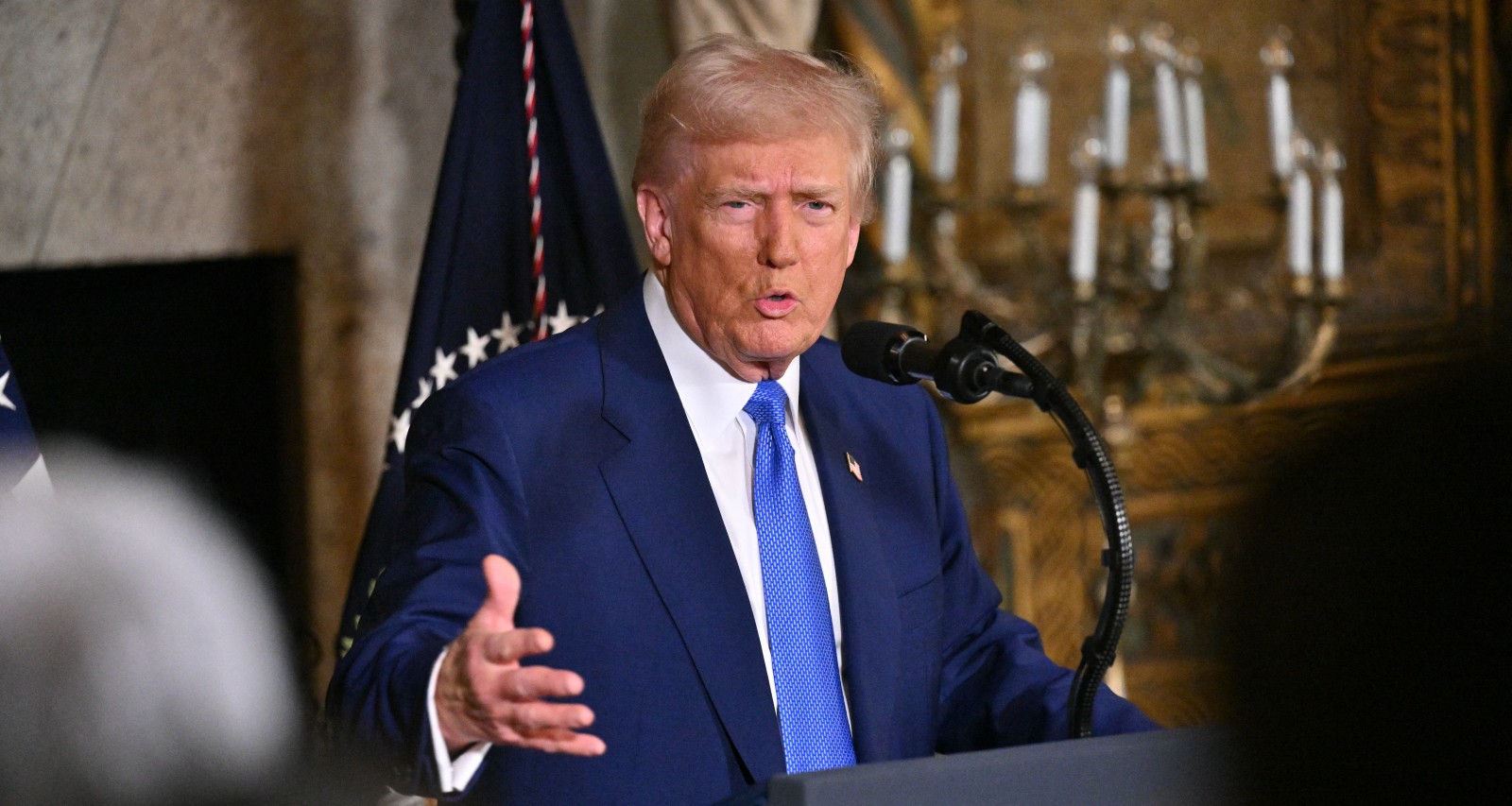Economic Nationalism vs. Voter Frustration
2.1 The “Buyer’s Remorse” Exchange
Question (Moran): “Some voters who supported you say, ‘I didn’t sign up for [higher prices].’ How do you respond?”
Answer (Trump): “They did sign up for it, actually.”
This eight-word retort crystallized the tension between Trump’s campaign promises—tough trade measures, reshoring manufacturing—and the immediate pain felt by consumers facing higher import costs and supply-chain disruptions.
2.2 Tariffs and Trade
-
China Tariffs: Expanded beyond narrow first-term measures to encompass a broader array of consumer goods.
-
Administration’s Justification: Long-standing Chinese trade imbalances, intellectual-property theft, and market-access barriers required forceful countermeasures.
-
Analyst Projections: Moody’s Analytics estimates a $2,000–$3,000 annual cost per household if proposed tariffs fully take effect.
Treasury Secretary J.D. Vance characterized these duties as “painful but necessary medicine” to recalibrate the U.S.–China relationship . However, sectors reliant on Chinese components—automotive in Michigan, electronics in Texas—warn of escalating production costs and delayed timelines.
2.3 Domestic Economic Metrics
-
Gasoline Prices: The president highlighted recent dips to as low as $1.98 in select states, versus peaks above $4.00.
-
Food Staples: Citing an “87% decrease” in egg prices since his inauguration—a figure contested by fact-checkers as a substantial overstatement.
Trump repeatedly contrasted current figures with those under his predecessor, framing his tenure as a corrective overhaul. Yet many Democrats and independent economists note that certain positive trends—declining energy costs, moderating inflation—began before his return to office.
3. Immigration and Border Security
3.1 “Invasion” Rhetoric and Apprehension Statistics
-
Border Crossings: Official figures report a 42% decline in U.S. Border Patrol apprehensions compared to the previous year. Critics observe that much of this reduction traces to policy shifts in late 2024, prior to Trump’s swearing-in.
-
“Remain in Mexico” Revival: Trump reinstated this program, requiring asylum seekers to await U.S. court hearings from across the border—praised by the administration as a deterrent, criticized by human-rights advocates as inhumane.
3.2 Conditions in Detention Facilities
Human-rights organizations document overcrowding, limited legal access, and medical shortfalls in several holding centers along the southern border. Despite these reports, the president maintained that his enforcement measures are both “strict” and “necessary,” contending that “when people know they can’t just walk in, they stop coming.”
4. Foreign Policy: Personal Diplomacy and Global Challenges
4.1 North Korea
Trump boasted of “beautiful letters” exchanged with Kim Jong Un. Yet under his watch, North Korea conducted at least three missile tests—raising questions about the efficacy of personal charm and correspondence as tools of deterrence.
4.2 Ukraine
When pressed on ending Russia’s war “within 24 hours,” Trump offered no details: “I know exactly what I’d do, and it would work,” he insisted. Secretary of State Mike Pompeo, however, insists any peace accord “must respect Ukrainian sovereignty.”
4.3 Middle East
Trump hinted at undisclosed breakthroughs in Israeli-Arab normalization: “When they happen, everyone will say, ‘Wow, that’s incredible.’” Absent specifics, negotiators and regional observers remain skeptical, awaiting concrete agreements rather than diplomatic teasers.
5. Public Approval: A Polarized Response
5.1 Historical Low for 100 Days
-
ABC News/Washington Post Poll: 41% approve, 55% disapprove—the lowest 100-day approval in eight decades.
-
NYT/Siena College Poll: 42% approval; 66% label the administration “chaotic.”
Trump dismissed these polls as “fake,” citing rally attendance and base enthusiasm as truer metrics. Yet political analysts warn that absence of a conventional “honeymoon” period underscores deep partisan divides.
5.2 Base vs. Independent Voters
While core supporters reiterate loyalty, erosion among moderate Republicans and independents signals potential vulnerabilities ahead of midterm and 2028 presidential contests.
6. Cabinet Composition and Staffing
6.1 Return of First-Term Loyalists
Key officials—Vos, Pompeo, Mnuchin—rejoined top posts, aiming to replicate first-term policy frameworks.
6.2 Contested Nominations
-
Tucker Carlson for Secretary of State: Publicly floated but never formalized; Pompeo ultimately reconfirmed.
-
Vacancies: Nearly 30% of Senate-confirmable posts remain unfilled or led by “acting” appointees.
6.3 Turnover
Four senior White House aides resigned within the first 100 days, prompting analogies to The Apprentice: “If they don’t perform, they’re fired,” Trump quipped.
7. Public Health and Pandemic Preparedness
7.1 Dismantling Federal COVID Infrastructure
Echoing campaign pledges, the administration rescinded numerous pandemic-response programs and shifted primary authority to states. Trump asserted, “No more lockdowns or mandates—Americans decide for themselves.”
7.2 Vaccine Policy Changes
-
Military and Federal Contractors: Vaccine requirements rolled back.
-
Natural Immunity Claims: Trump lauded “natural immunity” over vaccines, a stance at odds with mainstream medical research and prompting cautionary statements from public-health officials, including Dr. Anthony Fauci.
8. Environmental and Climate Regulations
8.1 Paris Agreement Exit
The United States formally withdrew from the Paris Climate Accord for the second time, signaling a reprioritization of energy independence over emission reductions.
8.2 Regulatory Rollbacks
Over 100 environmental rules—on vehicle efficiency, power-plant emissions, and land use—have been repealed or weakened. When challenged by Moran on climate science, Trump cited recent cold snaps: “It’s been very cold in many places; I’m not convinced about all this warming.”
9. Judicial Appointments
9.1 Rapid Confirmation Pace
Seventeen federal judges confirmed within 100 days—outpacing first-term metrics. Trump praised these “constitutional conservatives” as guardians of originalist jurisprudence.
9.2 Legal Pushback
Courts have already enjoined key executive orders on immigration and environment, prompting the Department of Justice to decry “activist judges” and appeal adverse rulings to the Supreme Court’s conservative majority.
10. Media Strategy and Transparency
10.1 Reduced Press Briefings
Only seven formal press-secretary briefings have occurred, a stark contrast to historical norms. The White House Correspondents’ Association issued a rare rebuke, citing “grave concern” over limited access.
10.2 Direct Messaging
Trump relies heavily on Truth Social and sympathetic outlets, dismissing mainstream journalists as “fake news” and preferring one-on-one interviews that afford him control over the narrative.
11. Looking Forward: Challenges and Opportunities
11.1 Economic Outlook
-
Inflation vs. Recession Risks: The Federal Reserve’s dual mandate to tame inflation without triggering recession will heavily influence voters’ pocketbook perceptions.
-
Supply-Chain Adaptation: Businesses must navigate higher input costs while exploring nearshoring initiatives.
11.2 Immigration Policy
-
Operational Adjustments: Border Patrol must reconcile warrant requirements with field realities, potentially embracing new technologies for rapid judicial review.
-
Community Relations: Local law-enforcement partnerships and sanctuary-policy debates will evolve in response to federal injunctions.
11.3 Geopolitical Maneuvers
-
Russia-Ukraine: Absent detailed proposals, European allies remain cautious of U.S. willingness to underwrite Ukrainian defense.
-
China Competition: Tariff diplomacy may spur accelerated investment in domestic semiconductor production and green-energy manufacturing—but carries short-term consumer costs.
11.4 Political Dynamics
-
Midterm Stakes: Republican majorities hinge on moderates’ tolerance of economic pain and polarization fatigue.
-
2028 Outlook: Trump’s unabashed style energizes the base—but may alienate suburban voters critical to broad victory margins.
Conclusion
President Trump’s centennial-day interview showcased an administration doubling down on nationalist policies—trade tariffs, stringent border controls, rollback of public-health and environmental safeguards—while dismissing public unease as pre-election commitments voters implicitly endorsed. As this professional rearticulation demonstrates, the coming months will test whether the promised long-term gains of Trump’s agenda outweigh the immediate burdens felt by households, businesses, and international partners.
Ultimately, the 100-day milestone offers only a snapshot. In presidential historian Doris Kearns Goodwin’s words, “Early frenetic action may reveal priorities, but adaptability and learning in the face of unforeseen challenges determine a presidency’s lasting legacy.” For this administration, the true measure will be whether conviction and confrontation translate into enduring results—or deepen the divisions that defined the opening act.

Sophia Rivers is an experienced News Content Editor with a sharp eye for detail and a passion for delivering accurate and engaging news stories. At TheArchivists, she specializes in curating, editing, and presenting news content that informs and resonates with a global audience.
Sophia holds a degree in Journalism from the University of Toronto, where she developed her skills in news reporting, media ethics, and digital journalism. Her expertise lies in identifying key stories, crafting compelling narratives, and ensuring journalistic integrity in every piece she edits.
Known for her precision and dedication to the truth, Sophia thrives in the fast-paced world of news editing. At TheArchivists, she focuses on producing high-quality news content that keeps readers informed while maintaining a balanced and insightful perspective.
With a commitment to delivering impactful journalism, Sophia is passionate about bringing clarity to complex issues and amplifying voices that matter. Her work reflects her belief in the power of news to shape conversations and inspire change.
